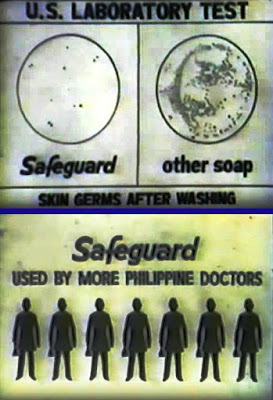(THIS WEEK’S POST IS A TRIBUTE TO MR. RAMON
R. JIMENEZ JR. (14 Jul. 1955/d. 27 Apr. 2020),, or simply MONJ to his
colleagues, whose passing at the age of 64 is mourned the Philippine
advertising industry that he inspired. After his illustrious career, he was named as the Secretary
of the Department of Tourism, promoting the country via his well-received and
hugely successful campaign “It’s More Fun in the Philippines” . Back in 1989,
MonJ was already making waves as a co-CEO (together with his equally talented
wife, Abby Lee Jimenez) of a small agency, Jimenez & Partners. One of their
joint works was a celebrated commercial written for DEQUADIN, which was named
as the the year’s best radio ads by the Creative Guild of the Philipines, in a
tie with Colgate’s “Nguya” radio ad.)
**********
The year 1989 marked the first time that two radio ads tied for the year’s honor. The first ad “DEQUADIN Do, Re,Mi” showed a novel way to present an undeniably antiseptic product, a throat lozenge, whose previous advertising exposure was limited to scientific testimonials in what Jimenez/DMB&B co-CEO Abby Jimenez calls “the pesteng ahem tradition”. The client, pharmaceutical firm Glaxo, had been advertising for 6 or 7 years, using the same authority figure in a white coat, but there was very little product awareness. “There was a need for truly impactful advertising:.
Abby’s co-CEO husband,Mon Jimenez Jr. , discovered that
Dequadin’s biggest competition was a decidedly non-medical little green candy
called Storck. “The earth-shaking news was that everybody knew you couldn’t die
of a sore throat. People were simply not taking sore throat seriously as Glaxo
was. So we had to lighten up a little”.
The solution was to produce “a commercial that celebrated
the end result”, according to Mon. “We wanted a clear demonstration of throat
power”, Abby adds, and that earch for “the well-est throat in the world” led
the Jimenezes to young tenor Nolyn Cabahug, who blew the agency away with his
o-the-spot demonstration.
LISTEN TO THE DEQUADIN AD
BY CLICKING THIS LINK:
As for possible jingles, several operatic pieces were eliminated
until the agency was left with the simplest jingle of all. Abby recalled how,
as children, she and her bother would try to outdo ech other by singing higher
and higher notes. Cabahug ended up delivering an up-front powerful series of octaves
that begins a capella and builds up
to a convincing crescendo.
The TV ad begins with a frame of the tenor’s face, but
the radio commercial takes off with pure sound. It is onely when Cabahug pauses
before the last “DO” of his 3rd octave that the product makes its perfectly-timed
appearance. “the final note is brought to you by DEQUADIN”—no explanations or product analyses necessary. By this
time, listeners who have been impressed Cabahug’s formidable range are
absolutely amazed by what the product has allowed him to do.
The radio commercial did not only catapult DEQUADIN to new heights of consumer
familiarity. It also did much to the career of Cabahug, now one of the country’s
opera stars, and for classical music in general. Plus “Do Re Mi” was the
campaign that turned a small agency called Jimenez and Partners into the
powerhouse of creative work that it is considered today.
SOURCE:
This article originally appeared on:
This article originally appeared on:
Perfect 10, A Decade of Creativity in Philippine
Advertising, pubished by the Exeutive Committee of the Creative Guild of the
Philippines, First Edition 1995. pp.76-77
VIEW ON THE 3RD, by JOJO BAILON, Nolyn Cabahug for Dequadin, https://www.facebook.com/watch/?v=2009299202443075DoReMi pix: https://www.bethsnotesplus.com/2012/01/do-re-mi-songs.html
Dequadin pix: honestbee.ph






















